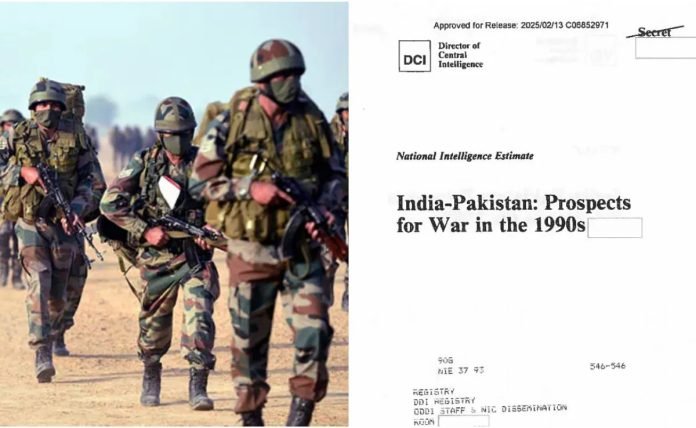New Delhi: The recent terrorist attack in Pahalgam’s Baisaran Valley, which claimed 26 lives and wounded over 20 people, echoes a pattern of violence that US intelligence predicted decades ago. This tragedy, attributed to The Resistance Front (TRF), reportedly an offshoot of the Lashkar-e-Taiba and backed by Pakistan’s deep state, exemplifies the continuation of a strategic approach foreseen by CIA analysts in 1993.
The declassified National Intelligence Estimate (NIE) from that year provides remarkable insight into Pakistan’s fundamental fear of India – not merely as a military or economic competitor, but as an existential threat – and how this fear continues to shape regional dynamics and security challenges today.
The 1993 National Intelligence Estimate, titled “India-Pakistan: Prospects for War in the 1990s,” represented a comprehensive analysis of the volatile relationship between the two South Asian nuclear neighbours. This classified document, prepared under the supervision of Bruce Riedel, a seasoned CIA analyst specialising in South Asian affairs, came at a pivotal moment in the subcontinent’s history. The assessment emerged in the aftermath of significant regional developments: India had just experienced the traumatic demolition of the Babri Masjid in December 1992, while Pakistan was grappling with political instability and economic challenges. Nuclear weapons, though not yet openly tested by either nation, loomed as a silent but very real threat in the background of any potential conflict.
Bruce Riedel, who oversaw the preparation of this intelligence estimate, brought significant expertise to the analysis. Having joined the CIA in 1977, Riedel had already established himself as an expert on US security, the Middle East, South Asia, and counter-terrorism. During the period when the NIE was being developed, Riedel was serving as the Director for Gulf and South Asia Affairs on the National Security Council (1991-1993), giving him unique insights into the regional dynamics. His deep understanding of South Asian geopolitics made him particularly well-suited to assess the complex relationship between India and Pakistan and the potential for conflict.
The document was not merely an academic exercise; it was designed to inform high-level US policy decisions during the early Clinton administration when South Asia was increasingly becoming a focus of attention. As an intelligence product, the NIE represented the collective assessment of the US intelligence community regarding the prospects for war between India and Pakistan in the coming decade.




